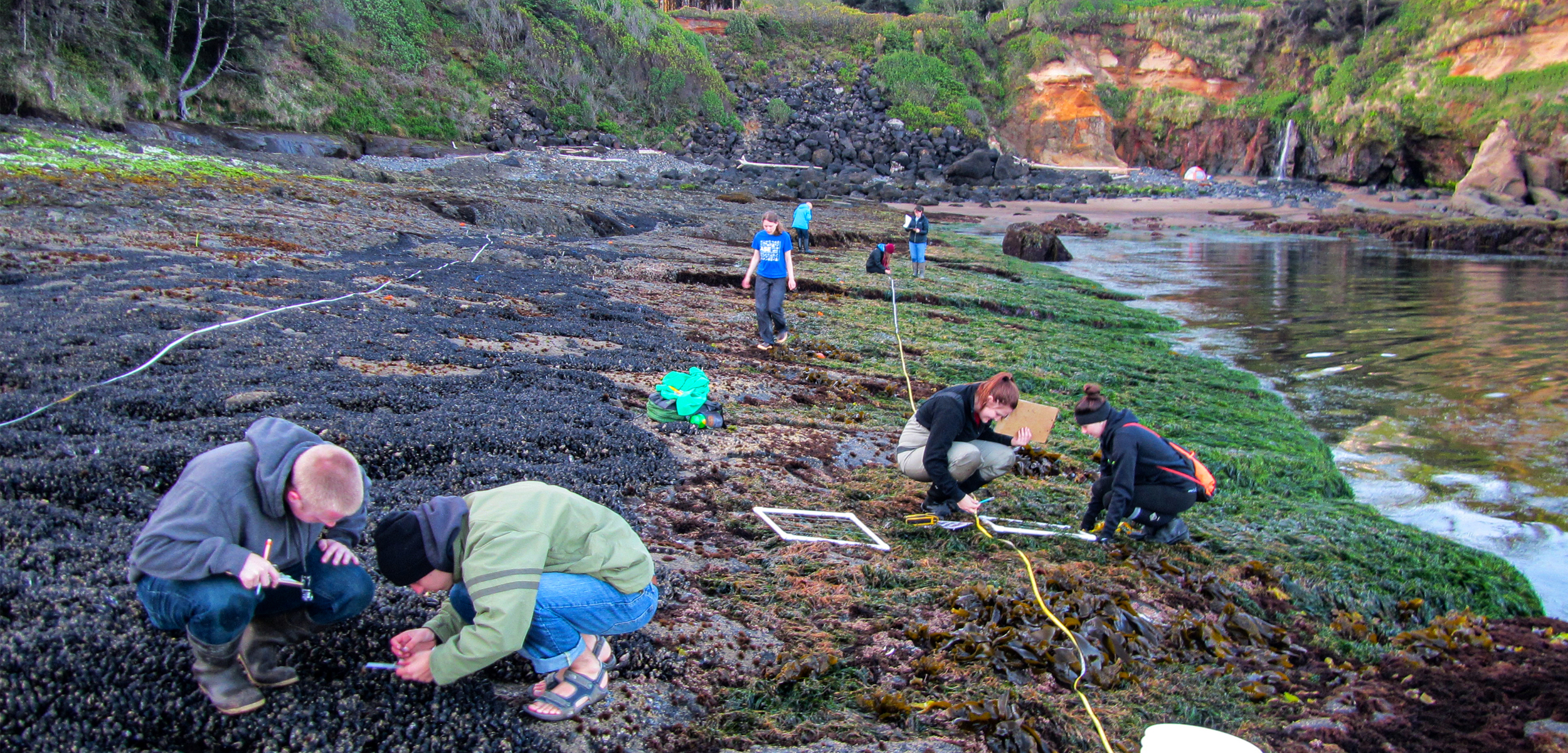Oregon’s Intertidal Ecosystem Is Approaching a Tipping Point
Ecologists are already finding the warning signs—hopefully it’s not too late.
Article body copy
Bruce Menge has spent his career trying to detect ecological catastrophes. In the 1970s, as a marine biologist at the University of Massachusetts, he studied thriving blue mussel populations along the rocky New England coast. In 2014, he revisited those same sites and found, to his alarm, that ocean warming had crashed the ecosystem. More than half the mussels were gone, largely replaced by algae. Now, he’s on the West Coast at Oregon State University, watching as Oregon’s rocky intertidal zone approaches disaster.
The Oregon coast is dotted with colonies of blue-black mussels intermingled with gray gooseneck barnacles. Perched above the mussel beds are tide pools, packed with red and green algae, ghostly white and pink anemones, and purple and orange sea stars bursting with color. Strips of lime-green surf grass wave in shallow water. To a beachgoer, the intertidal may seem vibrant, healthy, and unchanging from one year to the next. But that apparent stability belies the growing chaos of an ecosystem that appears to be heading for collapse.
“We thought the system was in pretty good shape,” Menge says. “As it turns out, we’re not so sure that’s the case anymore.”
Since 2012, Menge and his colleagues have been selectively disturbing six sites on the Oregon coast. Each July, at each site, the researchers carefully cleaned all of the marine life off a small patch of rock the size of a sidewalk square, then monitored the ecosystem’s recovery as mussels, barnacles, and algae recolonized the rock.

Researchers have been deliberately manipulating small patches of Oregon’s intertidal ecosystem since 2012. Their experiments have revealed the subtle signs of an environment on the brink of collapse—both in the experimental plots and, crucially, in the control sites. Photo courtesy of Bruce Menge
The work hinges on a key concept: a healthy ecosystem recovers quickly from a disturbance such as a heatwave or an outbreak of disease. An ecosystem that is slow to recover could be close to a tipping point beyond which it collapses irreversibly. Unnervingly, the research team found that every year, at every site, it took longer for the community of mussels, barnacles, algae, grasses, and other inhabitants to return to its previous state. By the end of the study period in 2019, disturbed sites needed about 17 percent longer—nearly nine weeks extra—to recover the species abundance and diversity that they had in 2012. And the slowdown was subtle; Menge could not recall noticing anything amiss in the field—it only showed up in the data.
Critically, Menge and his colleagues found that it wasn’t only the communities they were scraping away that were in danger. In year after year, organisms in the undisturbed control sites were also changing, with bigger and bigger swings in what was living there. At one site in 2016, for instance, gooseneck barnacles overran the control patch, covering up to 80 percent of the site after a nasty bout of sea star wasting disease had removed one of their biggest predators. The gooseneck barnacle populations declined over the next few years, but their numbers remained higher than before the takeover. The team also saw kelp bleaching events and mass mussel die-offs every year at multiple sites.
Together, slowing recovery times and reduced ecosystem stability suggest that as climate change brings more frequent disturbances to intertidal ecosystems, local species may struggle to recuperate in increasingly brief windows for recovery. In their place, other species, ones better suited to dealing with heat stress or acidity, can swoop in. As key species such as mussels, sea stars, or kelp are lost, and as the balance between disturbances and recovery time changes, the ecosystem can shift irreversibly. That’s the tipping point.
Slower recovery times in particular show that the lush intertidal is becoming less resilient and more susceptible to future disturbance, says Sarah Gravem, a marine ecologist at Oregon State University and a collaborator on the project. This decreasing resilience “is making the system more vulnerable,” she says, as evidenced by the increased variability in species found in communities. Together, the two may be priming the ecosystem for future catastrophe.
“We can’t really predict when that would happen,” Menge says, but increased instability like they observed in the control patches “can suggest it may be imminent.”
Menge and his team had no reason to predict this result when they began the study over a decade ago. “The West Coast system has seemed quite resilient for a long time, and we had no reason to think that would change,” he says by email.
“There’s no way of really mitigating against this,” he adds—attempting to do so would be a Sisyphean task. “It’s not a happy result.”
Though it’s possible the ecosystem could stabilize again if not faced with another big disturbance, the eight-year study offers a subtle understanding of how an ecosystem is being destabilized by climate change. The experiments are slated to continue through 2030.
“The news is not good,” says Vasilis Dakos, an ecologist at the University of Montpellier in France who was not involved in the study. “A tipping point can take a long time to unfold, but the thing is, once it starts happening, you can’t stop it.”
For scientists who have devoted their life’s work to studying ecosystems confronted by climate change, uncovering this kind of invisible unraveling can be deeply personal.
“It feels awful,” Menge says. “I mean, I love this ecosystem. I’ve worked in the intertidal zone for most of my career, and I always get such a great feeling when I go into the field. I’m home in a sort of corny way. And I’m certainly hoping that, in fact, things turn around.”

